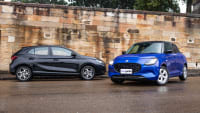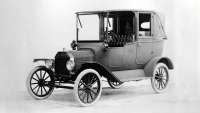As the incandescent bulb did to the candle, so the light-emitting diode – or LED – is doing for halogen lamps on cars.
LED lights, be they replacement globes for headlights or accessory lighting for your dual-cab ute or 4x4, are more robust, brighter and more efficient than their halogen counterparts.
Let’s take a quick walk through the LED lights you can get for your adventure vehicle.
Light basics

Even a quick look online will show you just how complex and vast the spectrum of LED lights for cars has become. Let’s wind back a bit and define a couple of terms.
Light output is measured in two ways; lumens is the figure you see the most, and it’s simply just a measure of the amount of light an LED throws off. The other measure is known as a lux, and it’s a measure of the light’s intensity. Think of lumens as kilowatts and lux as torque and you won’t go far wrong.
Outputs of LED lights range from a low of about 2000 lumens through to high-dollar huge arrays that throw off upwards of 10,000 lumens. To put that in perspective, a modern city street light outputs between 10,000 and 15,000 lumens.
LED lighting itself is almost purpose-built for off-road 4xs and dual-cabs.
Other factors to consider when buying LED lights for your 4x4 or dual-cab ute should include checking whether the wiring system is up to par; waterproof cabling and plugs are essential to keep LED lights shining when you need them most.
Bracketing is also important; do you have the right brackets in the box to affix the light to your car?
We would always recommend leaving the installation of lights to professionals. While the power and current draw for LEDs is much lower than for halogen lights, any electrical work has the potential to create a fire hazard, particularly if incorrect fuses are used or cables are left to rub against bodywork, eventually exposing live wires.
Styles of LED lights
LEDs can be used throughout a vehicle; interior lighting, for example, as well as taillights and headlights. The most common usage for LED vehicle lights is, however, on the front of a 4x4 or ute as auxiliary lights.
The traditional large round spotlight has essentially made way for what’s known as a light bar, though the basic principles remain the same.

Effective auxiliary lights are made up of two types of beam types, spot and spread, and both do as it says on the tin. Spot globes throw light in a long but narrow pattern, while spread throws light in a short but wide way.
A light bar – generally measured by width in inches - will have anywhere between two and 24 individual LED lamps. The greater the number of bulbs, the higher the likelihood that there will be a mix of spots and spreads in the mix.
Light bars have the added advantage that they can be mounted in different locations. For example, two small light bars with a spread pattern can be mounted low on the front bumper to provide a pool of light in front of the driver, while a wide, high-output spot pattern bar can be mounted on a roof-rack to illuminate the trail ahead and add contrast by casting shadows.
It’s still possible to buy circular lamps that are equipped with LED globes; their overall diameter is quite large, though, which limits where they can be mounted.

What you choose should be determined by what you want to achieve from your lighting system. If you love traversing tough tracks, then you need a good spread of light down low, and fixtures that won’t rattle loose or be broken off on a tree or rock scrape.
If you prefer long-distance touring and your journey takes you into the night, larger light fittings with a good combination of spread and spot beams will be the way to go.
Pros/cons
The pros of extra lighting are numerous; if you have no other choice than to drive in low-light or full-dark conditions than extra lighting makes spotting wildlife or other objects on the road or track much easier, thus giving you extra time in which to slow down or brake your vehicle in order to avoid a collision.

LED lighting itself is almost purpose-built for off-road 4xs and dual-cabs, too. It’s solid state, so there’s very little to break; its small form factor allows for smaller fittings that can be spread more widely around the car; and its low current draw puts much less strain on the car’s electrical system.
Cons include an increased risk of expensive lights being unbolted and stolen from your rig; lights need to be positioned so as not to affect airflow to radiators; and the use of auxiliary lights in urban areas is technically illegal.
Summary

Too much light is never enough when you’re out in the boonies, and LED lights are absolutely perfect for modern 4x4 adventure vehicles. Make sure you do your research, don’t fall for any 'special deals' on social media, only buy from reputable sources, and have it installed by a pro… and you’ll be seeing clearly like never before.
Price range
Two-lamp LED spot lights (pair): $100-200
12-inch, six-lamp spot/spread light (single): $150-$400
24-inch, 12-lamp spot light (single): $350-$800
50-inch, 28-lamp spot/spread combo light (single): $1000-$1500







.jpg)
.jpg)

.jpg)


.jpg)

.jpg)



.jpg)




